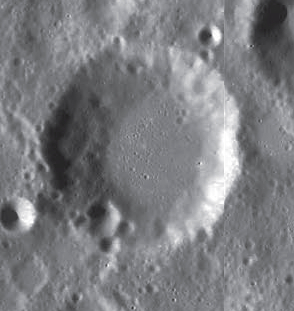 LRO image | |
| Coordinates | 5°30′N169°30′E / 5.5°N 169.5°E |
|---|---|
| Diameter | 39 km |
| Depth | Unknown |
| Colongitude | 191° at sunrise |
| Eponym | Jean Dufay |
Dufay is a lunar impact crater that is located on the far side of the Moon. It lies about one crater diameter to the east of the large walled plain Mandel'shtam. To the northwest is the crater Papaleksi and to the east is Valier.
Contents
The rim of this crater is heavily worn by impacts, and several small craterlets lie along the southern edge. The inner wall is somewhat wider on the western side when compared to the east and southeast. The interior floor is relatively level and featureless.




